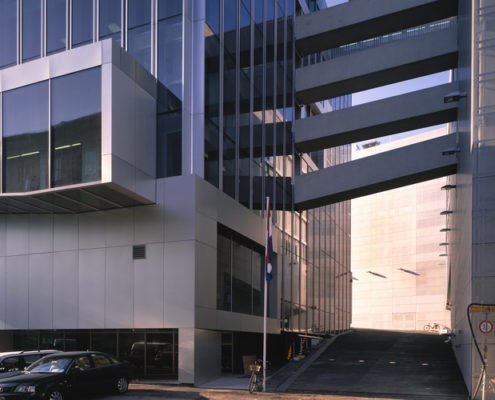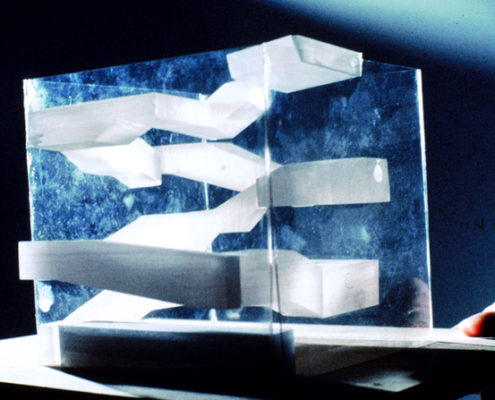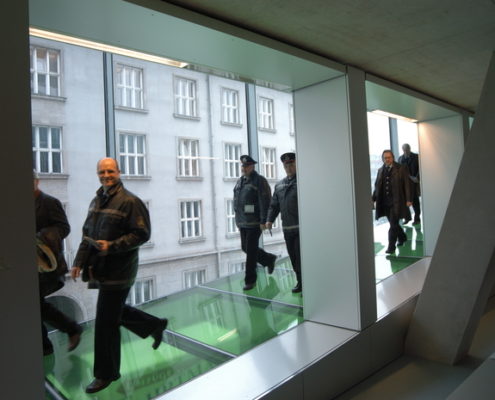The Netherlands Embassy is a disciplined cube with equally disciplined irregularities which aims to facilitate a better understanding of Berlin, confronting divergent ideas about how the city, with its complexity, heaviness, opacity, and beauty, should build / rebuild. Traditional planning guidelines of the former West Berlin demanded that new buildings in the neighbourhood (the Roldandufer in Mitte) reflect the local 19th century architectural style. Planning officials in the former East Berlin were more open to innovation. As a result, OMA combined an obedient approach (strictly fulfilling the block's perimeter) with a disobedient one (building an isolated cube).
The embassy cuts the single, contiguous structure implied by Berlin's regulations into two parts: a cube accommodating offices, and a wall - the same height as the cube (27m, as regulations dictate) and only semi-opaque - surrounding the cube on two sides, accommodating embassy residences, and creating a protected internal courtyard. Four pedestrian bridges span the courtyard and link the cube with the wall at varying levels.
Inside the cube, the sense of security and stability required for an embassy co-exists with the free circulation provided by a 200m path that zig-zags up through the eight storeys, determining the arrangement of the building's spaces.
From the entrance, the trajectory of the path leads to the library, on to the meeting rooms, skirting the offices, leading up to the fitness area and finally the restaurant on the roof terrace. This trajectory also distributes fresh air drawn from the double plenum façade to the work spaces (the areas that the path has carved out of the cube). At one point the path escapes the constraints of the cube and cantilevers over the courtyard. The regularity of the cube's glass and steel facade is disturbed again at moments where the path grazes the exterior, making itself visible from the outside and providing strategic views of the Spree, and the television tower.
Information provided in part by: OMA







